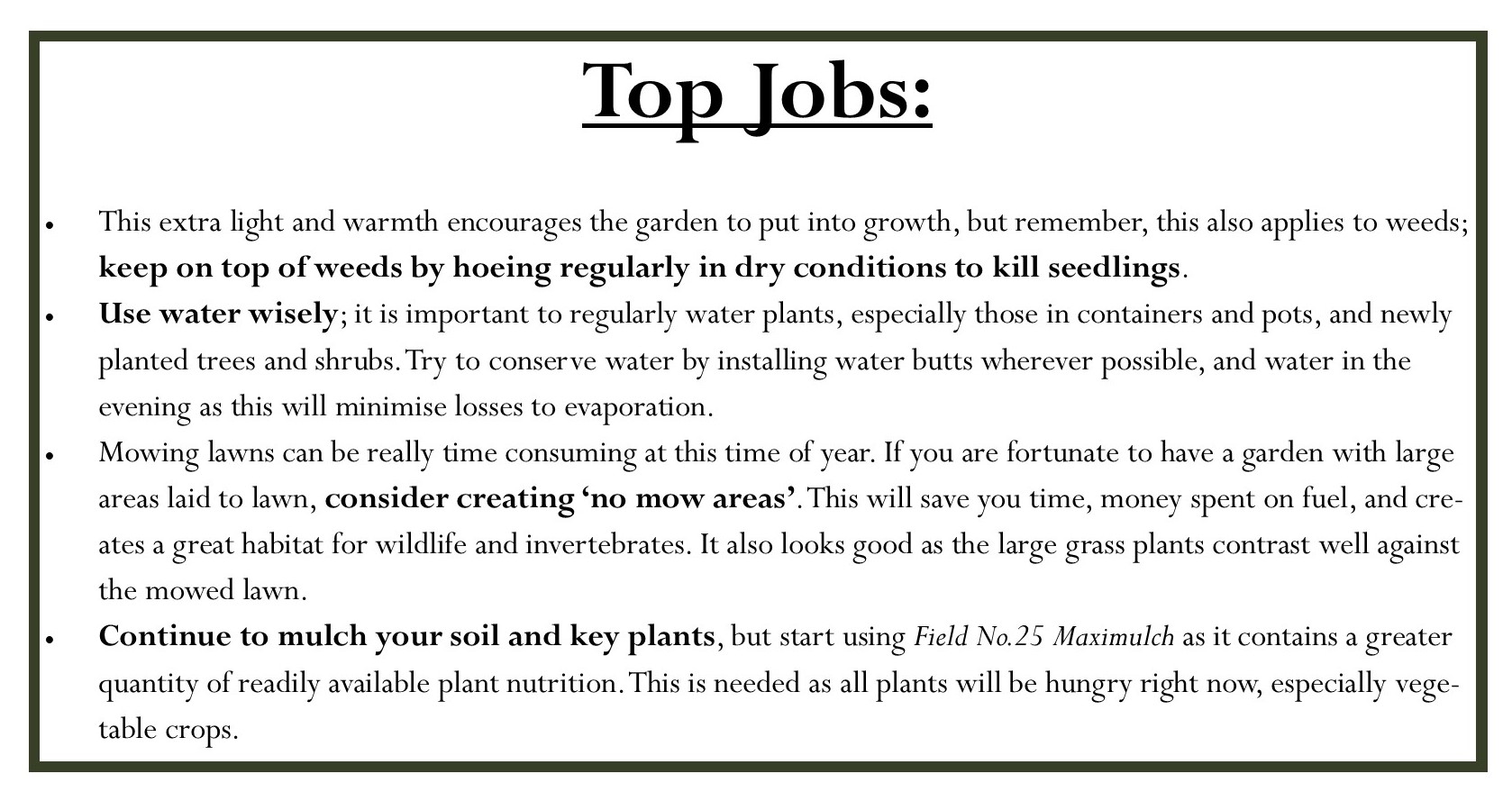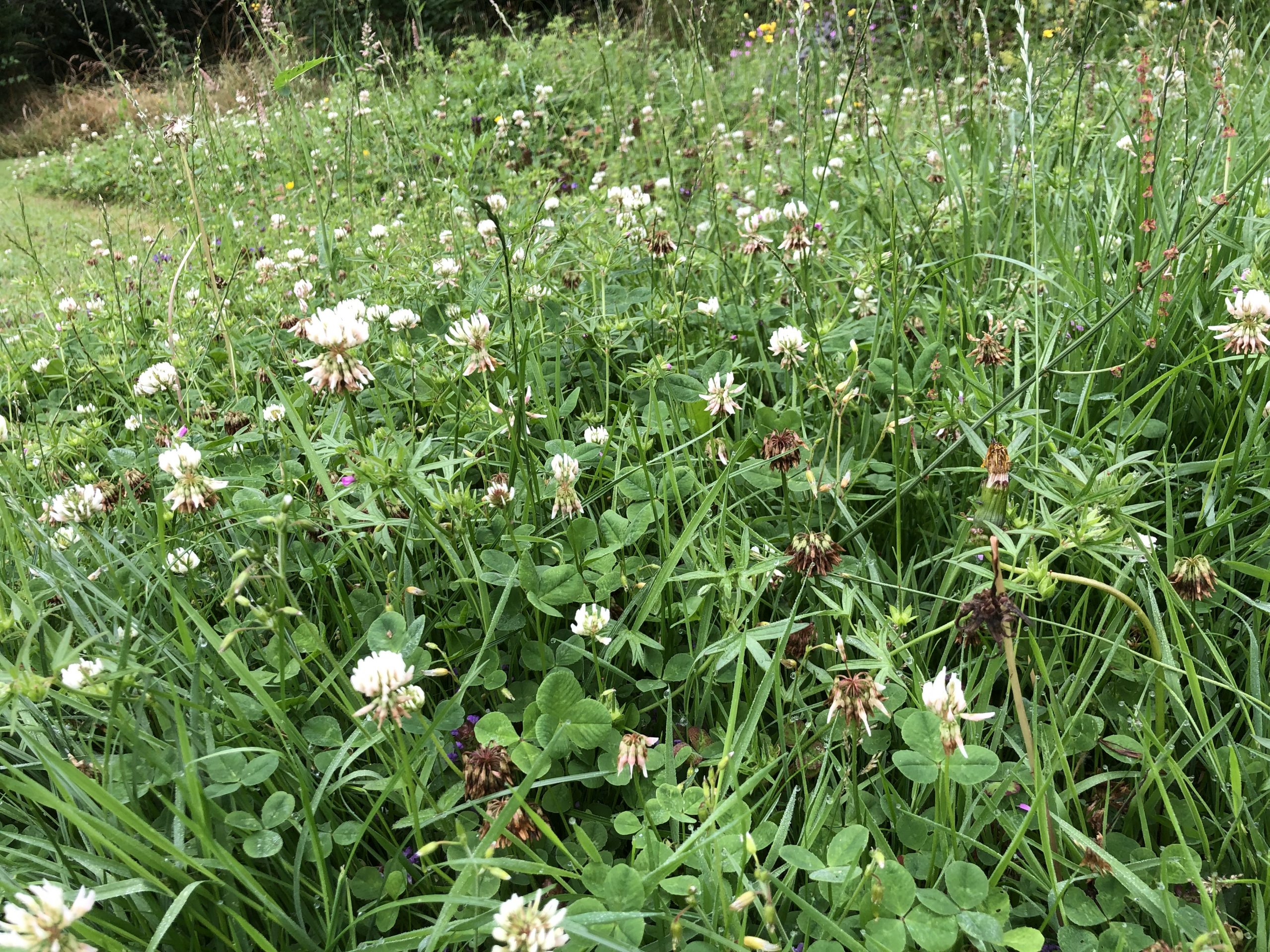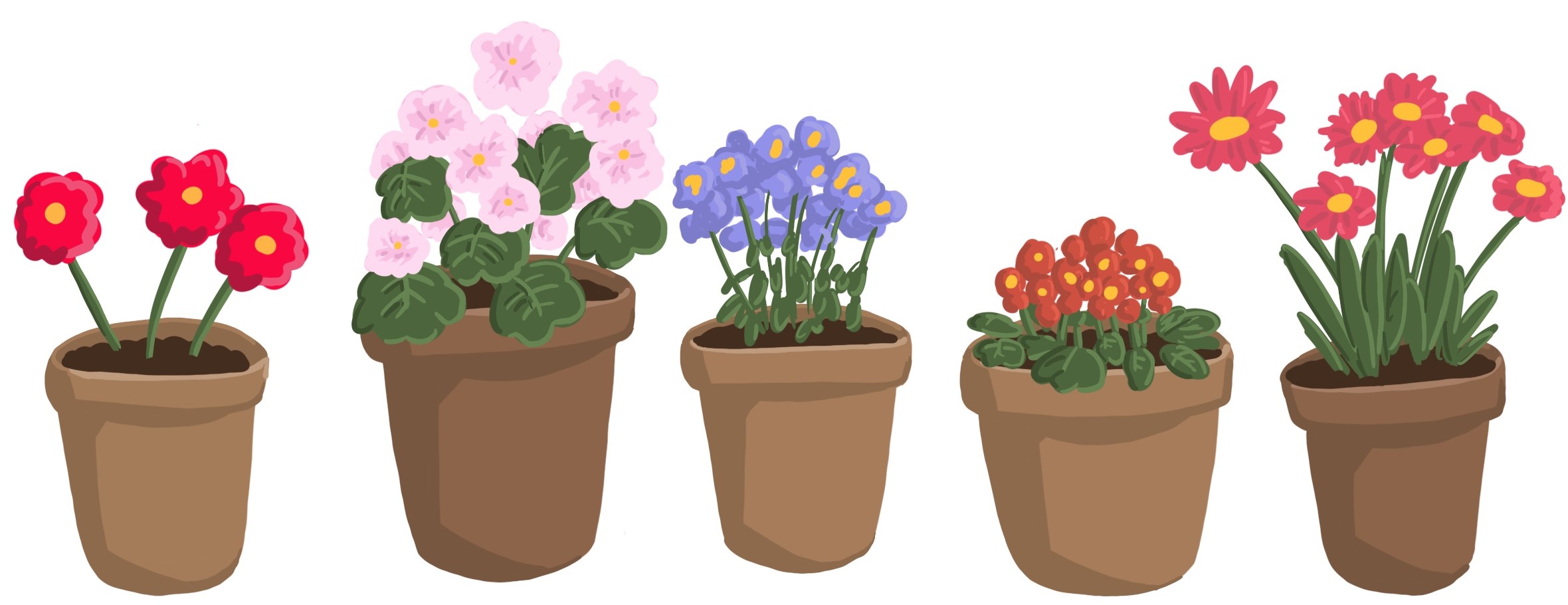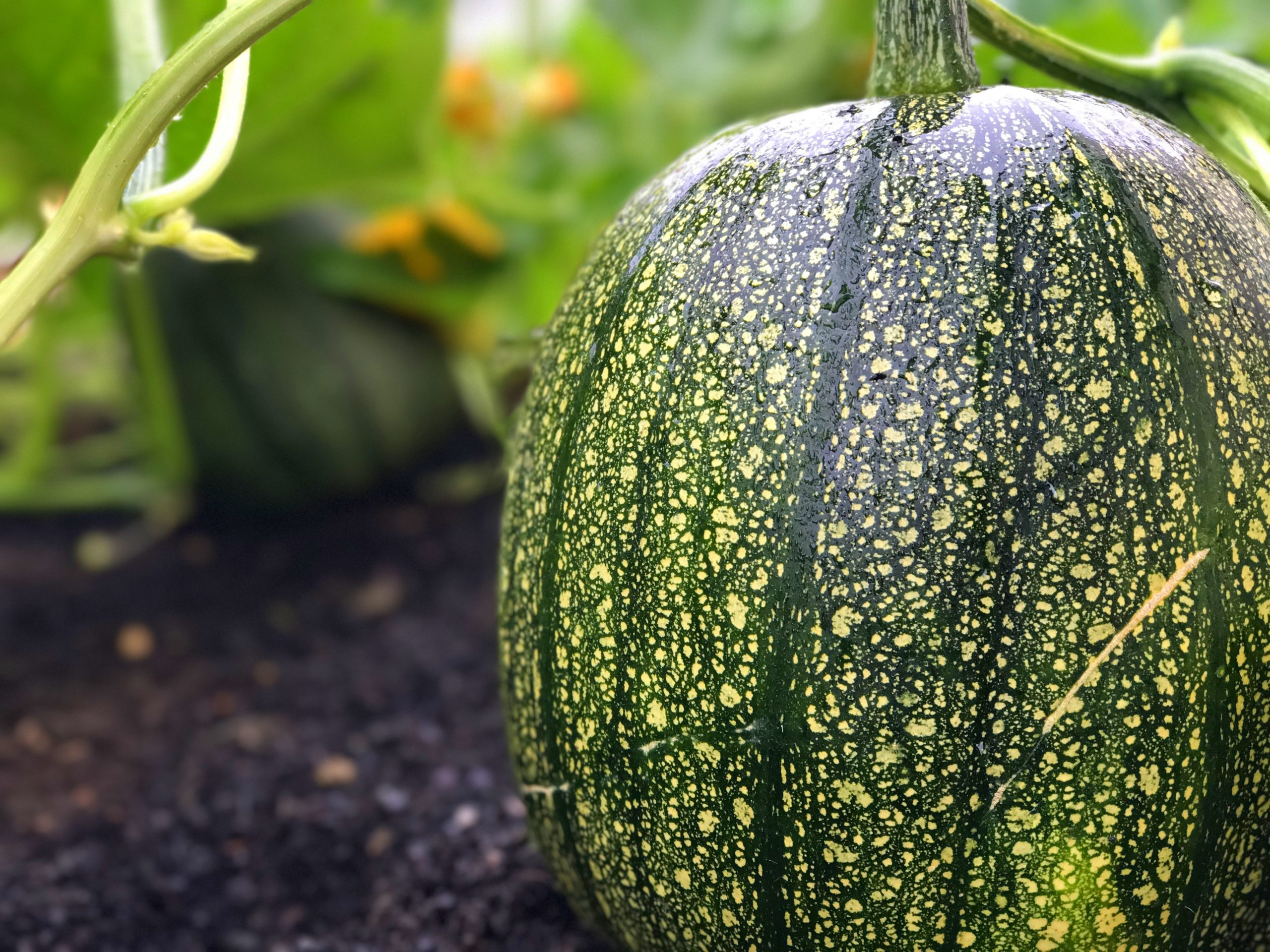And it’s June – how time flies!! And time does fly when you’re busy; we’ve had a hectic May attending the Suffolk, South Suffolk, and Hadleigh shows. Did you attend? If not, we will be at the Gardeners’ World Autumn Fair on August 30th, 31st and September 1st, and the Gransden Show at the end of September!
Now, June marks the end of spring and the beginning of summer; the days are long, with June 21st being the longest day of the year! With this extra daylight, there’s lots more time to get on with your gardening jobs and planting.

General maintenance:
- Use stiff-bristled brush or pressure washer to remove algae from paths.
- Remove dirt and algae from walls, paving and patios. Pressure washers can be rented if necessary.
- Check and repair pergolas, arbours and arches if needed.
Greenhouse:
- Shade the outside of your greenhouse, or use blinds on sunny days, to keep it cool and prevent scorching.
- Give plants more space as they put on new growth, this will help to prevent disease, and to contain early pest infestations.
- Water greenhouse plants in the evenings before bed, to reduce loss via evaporation.
Lawns:
Maintenance:
- Mow lawns at least once a week if you want them looking neat, healthy, and dense. Consider leaving designated no-mow areas to allow wildflowers to grow and bloom, and thus provide pollen and habitats for wildlife species.
- This is the first time of year that you can cut any long grass with bulbs in.
- Instead of watering established lawns in dry weather, mow less closely and less frequently. Leaving your lawn longer during dry spells helps the grass cope better. Don’t worry if you have any dead patches, it will soon recover once the rain returns.
- Keep lawns green during hot and dry summers by ‘mulching’ with our Field No.4 Organic Fine Grade Lawn Dressing.
New lawns:
- Don’t sow or lay any new lawns in June, unless you have access to lots of water. But this is not advisable nor sustainable.
- Water areas that were newly sown or turfed in spring. These will need watering regularly every few weeks, unless it rains, to keep it going through its first summer.
- Cut new lawns every week or so as required. Progressively lower the height of blades until they’re back at normal level, but keep blades high or stop mowing in hot weather.

Consider leaving no-mow areas to allow wildflowers to grow. Flowers:
Jobs:
- It is now safe to move pots, containers and hanging baskets outside as there is little/no risk of frost. But make sure hanging baskets don’t dry out; keep them moist but not too soggy.
- Stake tall or floppy plants, like hollyhocks, delphiniums, and large flower dahlias. Stake these tall flowers with a sturdy cane to prevent wind damage to flower spikes. Training sweet peas and tying them to supports will encourage them to climb and make a good display.
To plant:
- Harden off and plant out any summer bedding and seed-raised plants. Make sure to keep them well-watered, especially those in containers. Use No.23 Potting Blend compost for pots and containers or mix it with soil when planting out. Once in beds and borders, mulch these hungry plants with Field No.25 Maximulch. Mulch with Field No.11 Pot Mulch if in pots and baskets.
- Most spring flowers will have come and gone, leaving gaps in your garden borders. Fill gaps in herbaceous borders will annual bedding in June; sow flowers like dahlias and sunflowers direct in the soil where they will quickly germinate and grow. Use Field No.23 Professional Potting Blend compost to create a planting pocket in the ground for direct sowings.
- If you want to grow spring bedding for next year, many (e.g., pansies, wallflowers, and daisies) need to be sown between May and July to flower next spring. Use Field No.23 Professional Potting Blend compost to do this.
- Also use No.23 to plant up a new tropical display with tender exotics, like bananas, Ricinus, coleus, cannas and Amaranthus.
- Start sowing autumn plants, e.g., pansies and polyanthus in trays of fine compost, like our No.7 Seed Compost (not available online yet). Water and cover lightly, then place in the greenhouse. Check trays regularly to ensure germination has occurred and don’t let seedlings dry out.

Fruit & Veg:
Jobs:
- Pinch out side-shoots of tomatoes. Do this every time you water them, so you don’t forget; check plants for any shoots sprouting in the joint between the leaf and stem.
- Apply a weekly potash tomato feed to encourage the production of more flowers and thus more fruits. This also applies to other fruiting veg crops, including courgettes, pumpkins, chillies, and peppers.
- Harvest your crops. Harvest lettuce, radish and other salads, early potatoes, peas, strawberries, and beetroot. Enjoy the last harvests of asparagus this month, then leave the ferny top growth to grow over the summer.
- Spread mulch around thirsty crops, e.g., beans and courgettes to hold in moisture around their roots. Use our No.25 Maximulch to also feed hungry plants.
To plant:
- Plant out tender veg and young plants raised indoors, e.g., beans, tomatoes, courgettes, pumpkins, sweetcorn and cabbages. Mix some Field No.23 Potting Blend compost in with the soil when planting, and mulch with our Field No.25 Maximulch once the plants are in the beds and borders.
- Herbs: sow in pots and allow them to grow on the kitchen windowsill or in the greenhouse. Sow coriander, parsley and basil in No.23 Potting compost.
- Spring onions. These can be sown from March to august, and sowing every few weeks ensures a continuous crop. Sow direct in shallow drills or in pots, but they will need lots of moisture. Use Field No.23 Professional Potting Blend compost.
- Late sprouting broccoli cultivars and calabrese can both be sown in June; sow them direct in well-prepared soil or into multi-celled trays to plant out later. Also plant out broccoli and calabrese plants sown in May; use Field No.23 in drills or mix with the soil when planting out.
- Early June will be the last month to sow pumpkins, to provide the plants with plenty of warm days to develop size and good flavour. Sow direct into fertile soil using Field No.23 in a planting pocket, or use No.23 when planting into individual pots to plant out later.
Trees & shrubs:
Jobs:
- Cut back tender shrubs, e.g., Penstemon, Caryopteris and hardy fuchsias.
- Clip fast-growing and evergreen hedges, e.g., privet, box and Lonicera nitida if needed.
- Thin out new shoots on trees and shrubs that were pruned in winter to stimulate growth; remove crossing stems to prevent overcrowding of new growth.
- Ensure newly planted trees and shrubs do not dry out by keeping them well-watered.




